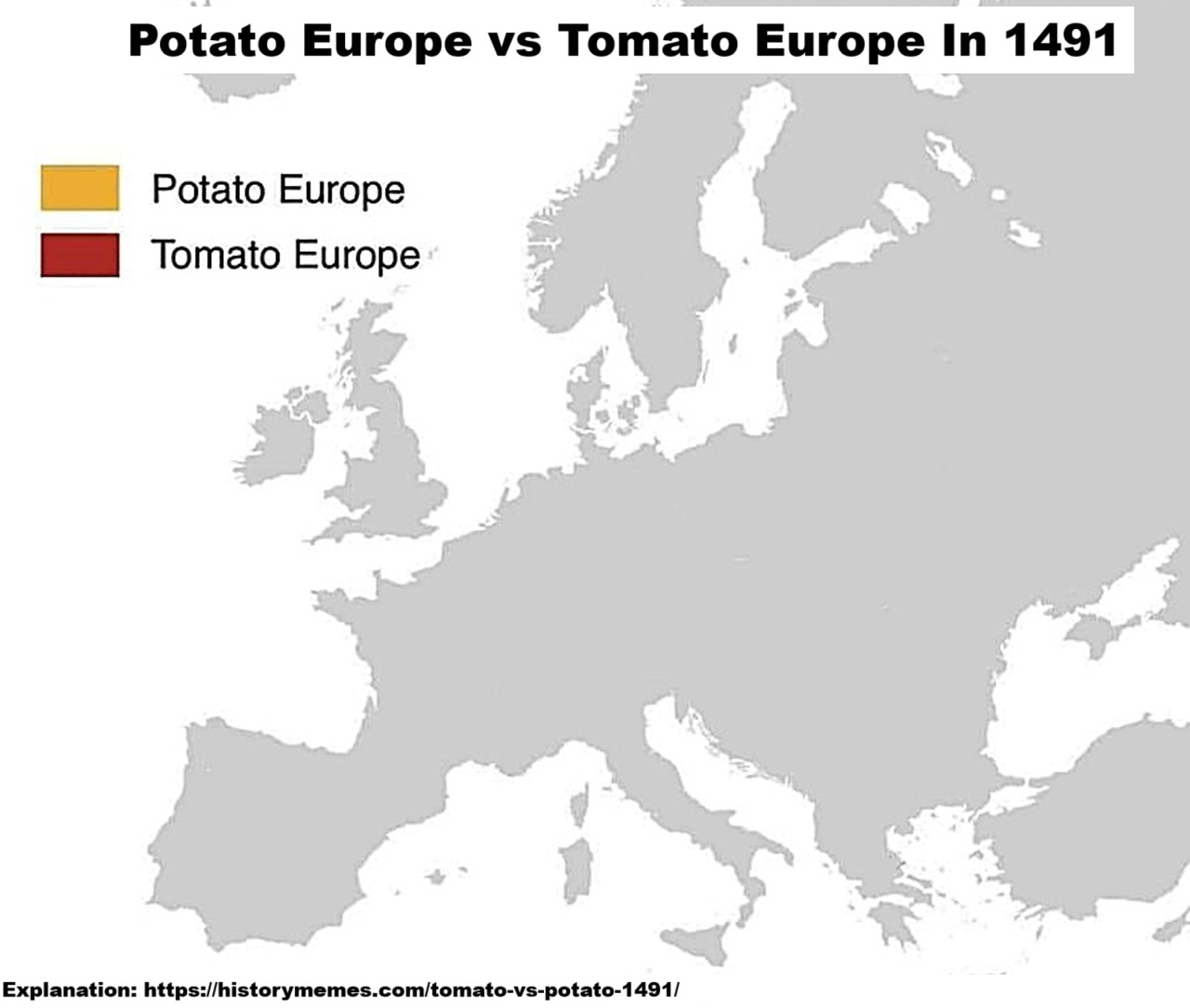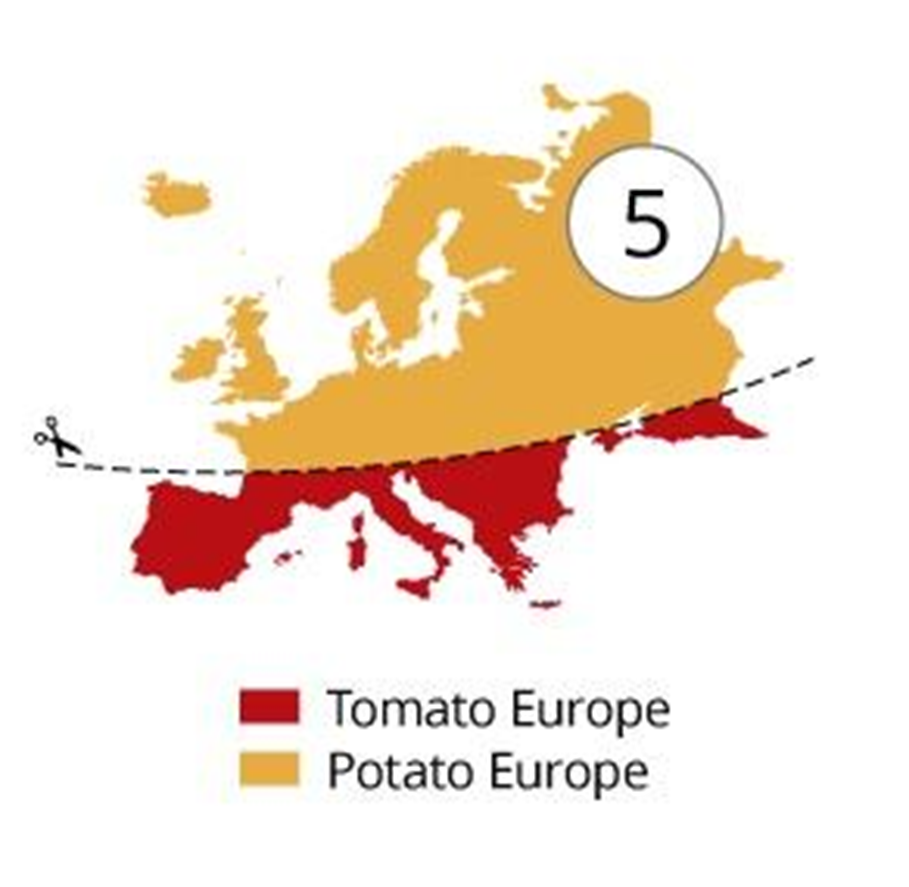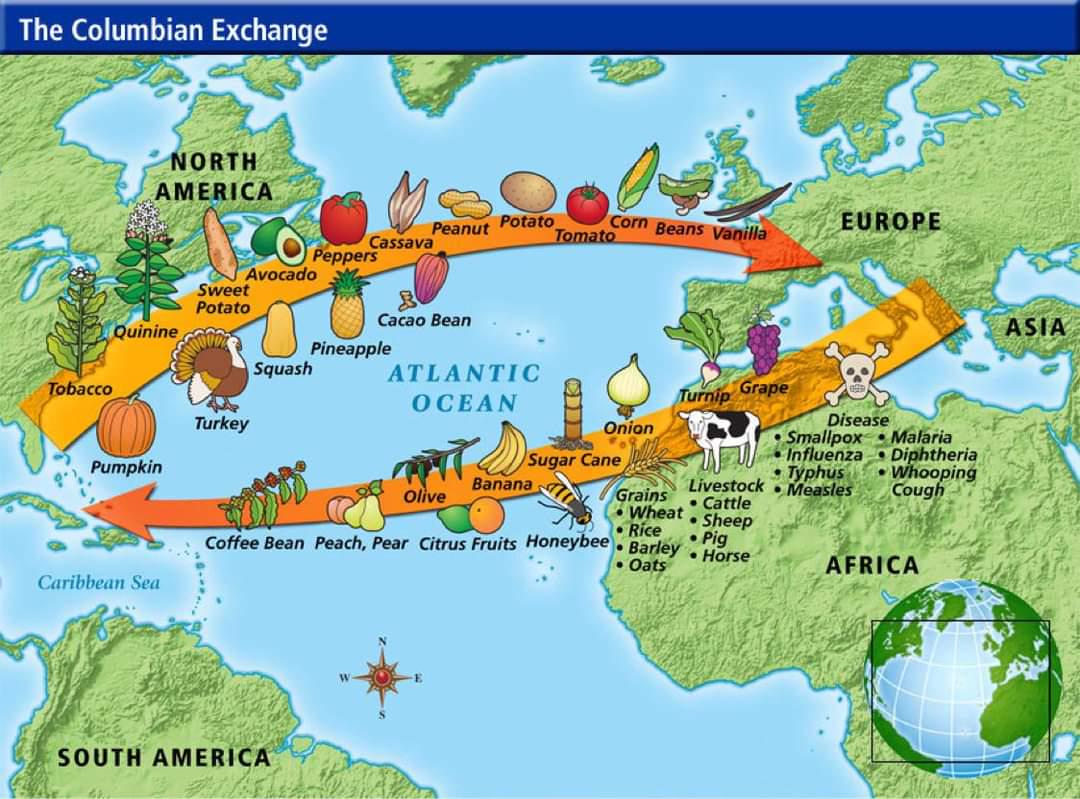
It shows a map of Europe in 1491, labelled as if there were two regions:
- Potato Europe (yellow)
- Tomato Europe (red)
But the map is completely blank, no colors are filled in.
The joke is that in 1491, neither potatoes nor tomatoes existed in Europe.
Both were crops native to the Americas and only brought to Europe after Columbus’s voyages (post-1492, part of the Columbian Exchange). So in 1491, the entire continent was “neither Potato Europe nor Tomato Europe,” making the whole map empty.
Now putting the joke into
Let’s put the joke into context with the actual history of potatoes and tomatoes in Europe:
Let’s put the joke into context with the actual history of potatoes and tomatoes in Europe:
Potatoes 🥔
- Origin: Andes region of South America (modern Peru and Bolivia).
- Arrival in Europe: Around the late 1500s, brought back by Spanish explorers.
- Spread:
- First in Spain and Italy, then to the rest of Europe.
- At first, Europeans were suspicious of potatoes (they looked strange, grew underground, and were linked to the poisonous nightshade family).
- By the 18th century, potatoes became a staple, especially in Ireland, Germany, Poland, and Russia, because they grew well in poor soils and provided lots of calories.
- They played a huge role in population growth, but also in disasters like the Irish Potato Famine (1845–1852) when crops failed.
Tomatoes 🍅
- Origin: Also native to the Andes/Mesoamerica (cultivated by the Aztecs).
- Arrival in Europe: Early 1500s, via Spain after the Columbian Exchange.
- Spread:
- Initially grown as an ornamental plant, not food, again, because of its nightshade family connections. Some Europeans thought it was poisonous.
- By the 1600s, tomatoes started being used in cooking, especially in Italy and the Mediterranean region.
- By the 1700s–1800s, tomatoes had become central to cuisines like Italian pasta sauces, Spanish gazpacho, and later pizza.
Here’s a map of the Columbia Exchange, including many other types of food.
Want to learn more about the Columbia Exchange? Then have a look at the following books:


Leave a Reply